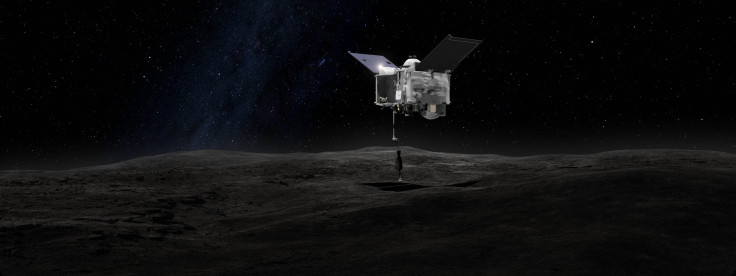What To Know About NASA's Historic OSIRIS-REx Mission This Week
KEY POINTS
- NASA is set to perform a historic sample collection mission this week
- It will be NASA's first attempt to collect samples from the surface of an asteroid
- The agency will provide a live coverage of the mission
NASA is set to perform a historic sample collection mission from an asteroid's surface. Should things go according to plan, the asteroid samples will be returned to Earth by September 2023.
It was on Dec. 3, 2018 the spacecraft Origins, Spectral Interpretation, Resource Identification, Security-Regolith Explorer (OSIRIS-REx) arrived at asteroid Bennu. At 6.12 p.m. EDT Tuesday, it will finally fulfill its Touch-And-Go (TAG) mission of retrieving the agency's first-ever samples from an asteroid's surface.
In the final rehearsal for the mission last August, the spacecraft performed the necessary maneuvers and came as close as it possibly could to the asteroid before backing up again. On Tuesday, the spacecraft will perform the maneuvers it has previously practiced, except this time its sampling mechanism, the Touch-And-Go Sample Acquisition Mechanism (TAGSAM), will actually reach to the surface of the "Nightingale" landing site, fire pressurized nitrogen to disturb the surface and collect at least 2 ounces of regolith.
"The solar panels will pull back safely away so they can't touch Bennu's surface, and the Natural Feature Tracking system will enable the spacecraft to pull back before the spacecraft is in danger of colliding with a hazardous area of the 'Nightingale' landing site, which while our best option for gather surface material, is surrounded by massive mission-ending boulders," project manager for the OSIRIS-REx work at IV&V, Roger Harris, said in a NASA mission check-in.
Although the descent to Bennu may take hours, the actual sample collection will last for just a few seconds before OSIRIS-REx safely backs away from the asteroid again.
Because there is a 15-minute one-way light time for the signals between the Earth and OSIRIS-REx, the mission team will have to uplink all the commands beforehand for the spacecraft to perform them autonomously.
If the first attempt doesn't succeed, OSIRIS-REx has enough nitrogen for two more sampling attempts, NASA said.
What’s everyone up to this weekend? I’m getting ready for my boop with Bennu!
— NASA's OSIRIS-REx (@OSIRISREx) October 18, 2020
Tuesday’s sample collection event is just around the corner, be sure to join me and my team as we go #ToBennuAndBack pic.twitter.com/uaTXgbUHCH
Previously, Japan Aerospace Exploration Agency's (JAXA) Hayabusa and Hayabusa 2 also collected samples from asteroid surfaces, the former returning the samples to Earth in 2010 and the latter still on its way back to Earth. Before this, scientists studied asteroids mainly by the meteorites that fall to Earth.
But why did NASA choose to visit asteroid Bennu? The agency explains that Bennu's orbit is similar to that of the Earth. Since the mission includes not just collecting samples but also returning them to Earth, the asteroid needs to be accessible, the agency says.
Because of its large size, Bennu rotates much slower than other smaller asteroids, making it easier to get close. It is believed to be very old and carbon-rich and hence, samples from it could provide vital clues as to the origins of life on Earth.
It's also possible that Bennu contains gold and platinum, so the mission could shed light on the possibility of future asteroid mining. The possible presence of water on Bennu could also hint at a potential source of water for future human deep space explorations.
Interestingly, Tuesday's TAG mission comes just about a year after the 20th anniversary of the discovery of asteroid Bennu.
NASA will provide a live coverage of the historic mission.

© Copyright IBTimes 2024. All rights reserved.






















